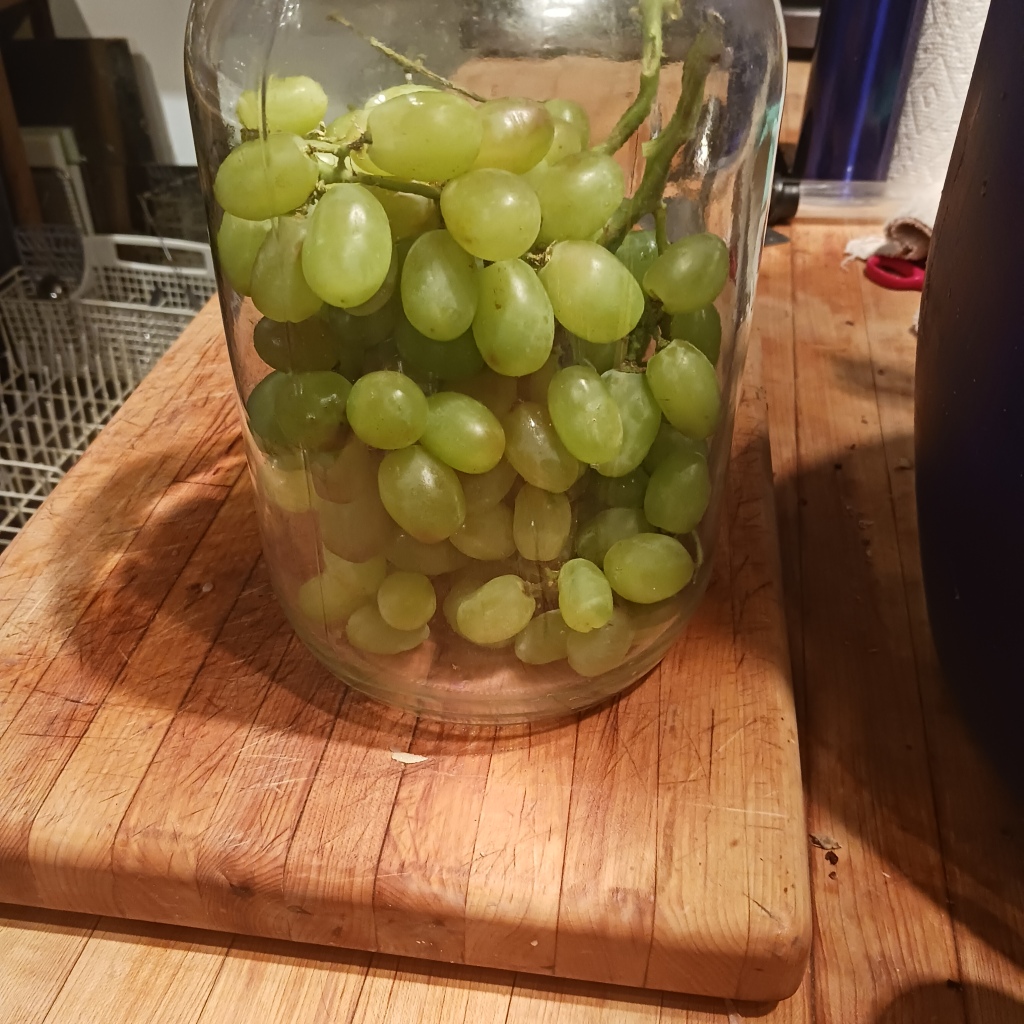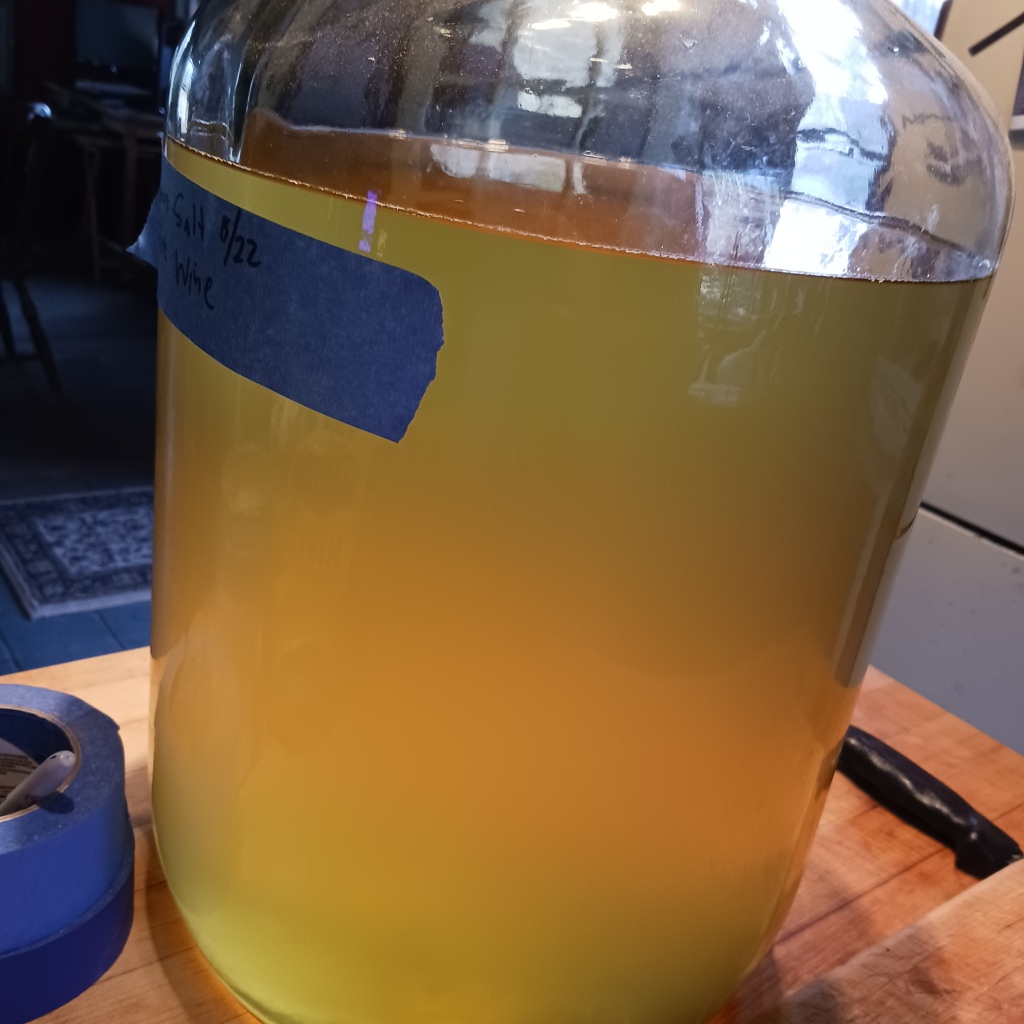So before you go any further, read this Roman/Georgian wine experiment.
Otherwise none of this will make any sense to you.
Ok? Caught up? good. So we’re taking the recipe one step further. We’re seeing wines that are predominantly cut in half with water. Why? because Romans always felt that drinking straight wine was uncouth and also not good for you. By cutting the wine you eliminated the possibility of being drunk/ hungover and you technically can kill the bacteria in the water you’re drinking it with. Today we’re learning to make Coum (Saltwater Wine)
Coum wine (Salt Water Wine)
(Pronounced Koom Wine)
By Pan (Master) Krzyslaw “Kythe” Szubielka
CXII.
Vinum Coum si voles facere, aquam ex alto marinam sumito mari tranquillo, cum ventus non erit, dies LXX ante vindemiam, quo aqua dulcis non perveniet. Ubi hauseris de mari, in dolium infundito, nolito inplere, quadrantalibus quinque minus sit quam plenum. Operculum inponito, relinquito qua interspiret. Ubi dies XXX praeterierint, transfundito in alterum dolium puriter et leniter, relinquito in imo quod desiderit. Post dies XX in alterum dolium item transfundito; ita relinquito usque ad vindemiam. Unde vinum Coum facere voles, uvas relinquito in vinea, sinito bene coquantur, et ubi pluerit et siccaverit, tum deligito et ponito in sole biduum aut triduum sub dio, si pluviae non erunt. Si pluvia erit, in tecto cratibus conponito, et siqua acina corrupta erunt, depurgato. Tum sumito aquam marinam Q. S. S. E, in dolium quinquagenarium infundito aquae marinae Q. X. Tum acina de uvis miscellis decarpito de scopione in idem dolium, usque dum inpleveris. Manu conprimito acina, ut conbibant aquam marinam. Ubi inpleveris dolium, operculo operito, relinquito qua interspiret. Ubi triduum praeterierit, eximito de dolio et calcato in torculario et id vinum condito in dolia lauta et pura et sicca.
Translation:
62.
If you want to make Coum wine, take water from the deep sea and a calm sea, when there will be no wind, 70 days before the harvest, when fresh water will not reach it. When you draw from the sea, pour it into a cask, do not fill it up, let it be five quarts less than full. After putting on the lid, I leave it to breathe. When the 30 days have passed, I pour it into another barrel cleanly and gently, and leave it at the bottom as it desires. After 20 days, the item was transferred into another barrel; so I leave it until the harvest. Whence you wish to make wine, leave the grapes in the vineyard, allow them to ripen well, and when it rains and dry, then pick them and place them in the sun for two or three days under the sun, if there will be no rain. If there will be rain, the bars will be arranged on the roof, and if the corn will be corrupted, it will be cleaned. Then I take the sea water, and pour it into a fifty-gallon cask of sea water. Then a bunch of mixed grapes plucked from the broom into the same cask, until you have filled it. With the hand pressed a grain, as they were drinking sea water. When you have filled the barrel, cover it with a lid and leave it to breathe. When three days have passed, it is taken out of the cask and trodden in a press, and the wine is stored in clean, and dry casks.
Redaction:
To make Coum wine, go into the deep sea when it is calm 70 days before the (grape) harvest. Draw the salt water from the sea and pour it into the cask, stopping 5 quarts before full. Let the salt water sit for 30 days and pour into another barrel leaving the lower (settled dirt) water and let sit for another 20 days. As the grapes mature the sea water is poured into a container and the grapes are poured in and pressed down to immerse the grapes completely. After 3 days, take the grapes out of the cask and press them. Store the wine in a clean dry cask (to ferment).
Tools:
- Wooden Press stick for crushing the grapes
- 5 Gallon Barrel (plastic)
- Glass Carboy (for clarifying the must from the wine)
Ingredients: Based on 5 Gallon Batch
- 3, 10 lb boxes of Malvaisa Bianca Grapes- chosen because it is a variety of grape that was used as a Roman/Greek wine source. (1). It was one of the first grapes used to mass produce wine and it is the same “Malmsey wine” used in Shakespeare’s Richard III where the king convicted his brother of treason and was executed by drowning in a butt of Malmsey wine.
- 5 Gallons of Salt water harvested off the coast of Malagentia in the region of York Beach, ME.
Process:
This was an interesting project to have as a follow up to my Roman/Georgian wine experiment. As a brief recap, back in April of 2019 I did a wine which basically consisted of obtaining a large amount of grapes, cleaning them and loading them into a container which then went into the ground for a good six months over the winter. The theory being that we were using the same methods the Romans and Georgians used to create a golden colored wine (The difference here is that we are using a single grape as opposed to whatever was available). Fermenting through natural yeast and the ground kept the grapes at a comfortable 50-60 degrees over the winter to encourage fermentation.



In this recipe the collected Sea Water which was barreled and let set so all the fine particulates would settle. The grapes were harvested late in the season to maximize the most sugars. They were then set out to dry in the sun for 3 days which didn’t turn them into raisins but did make them slightly receptive to absorbing the salt water. After 3 days the grapes were drained and then (without rinsing) crushed and put into the barrel. This was done in late August of 2022 and stayed there until April 2nd using the same techniques as was done in the Dolum (large fermentation vat) previously.



After the fermentation was complete, the wine was poured off the crush mixture and into a glass container where it clarified over the next 2 weeks by dropping out the must. Once it was clear enough to read through, I deemed it able to be bottled.
Expectations:
The wine will not be expected to have a salty flavor. The amount of salt water left on the outside of the grapes would be minimal and 3 days of soaking would not draw a large quantity of sea water into the grape itself. I don’t believe the salt water is actually meant as a flavoring, but more as a way to remove bacteria and creepy crawlies that may exist within the grapes. The concept of “salt curing” may have been in it’s primitive stages at this time so they were effectively curing the grapes. This would also extend the life of the wine.
Some exceptions:
First, I will admit that I used a plastic 20 gallon barrel. Looking into wooden barrels or clay vessels as before on the Roman/Georgian wine experiment was cost prohibitive. Plastic barrels were food grade quality and much easier to obtain. If I was doing this regularly as a career, it would make more sense to purchase a larger container made of the required materials. We can expect that a flavor difference will be evident since wood (especially European Oak) would imbue a buttery flavor. Clay amphorae may give it a more earthy tone depending on if the amphorae was new or had been used multiple times for previous batches of wine. The plastic barrel allowed regulation of temperature and left it with a neutral flavor profile because it previously transported olives packed in olive oil.
Grapes purchased from M. Cutone Wine Grape Co.- I do not own my own vineyards but purchasing grapes in quantities I needed was the next best thing. This would have been done in period both for personal use and winemakers who did not own their own vineyards. I chose the company because they had a large selection of grapes which would come from the regions I was looking for.
Bibliography:
- Malvasia Bianca Grape Origins: https://www.heartofthedesert.com/malvasia-bianca-a-wine-with-ancient-origins/#:~:text=Malvasia%20Bianca%20is%20characterized%20by,soft%20texture%20in%20the%20mouth.
- https://www.atlasobscura.com/articles/adding-salt-to-wine
- Marcus Porcius Cato / De agricultura (first historical reference of winemakers adding seawater to wine)
- Pliny the Elder Chronicles
- Lucius Moderatus Columella
- Domaine du Maridet / Coum d’Al Llop France /Côtes du Roussillon / Domaine du Maridet
Red wine·Blend
- https://greekreporter.com/2022/05/09/why-ancient-greeks-mixed-wine-with-seawater/
- https://hakaimagazine.com/news/this-seawater-infused-wine-is-sweet-thick-and-not-at-all-salty/
- https://www.winemag.com/2020/09/17/straw-wine-raisin-south-africa/ (cross reference of a French wine using similar drying techniques but longer period for a sweeter more dessert wine)